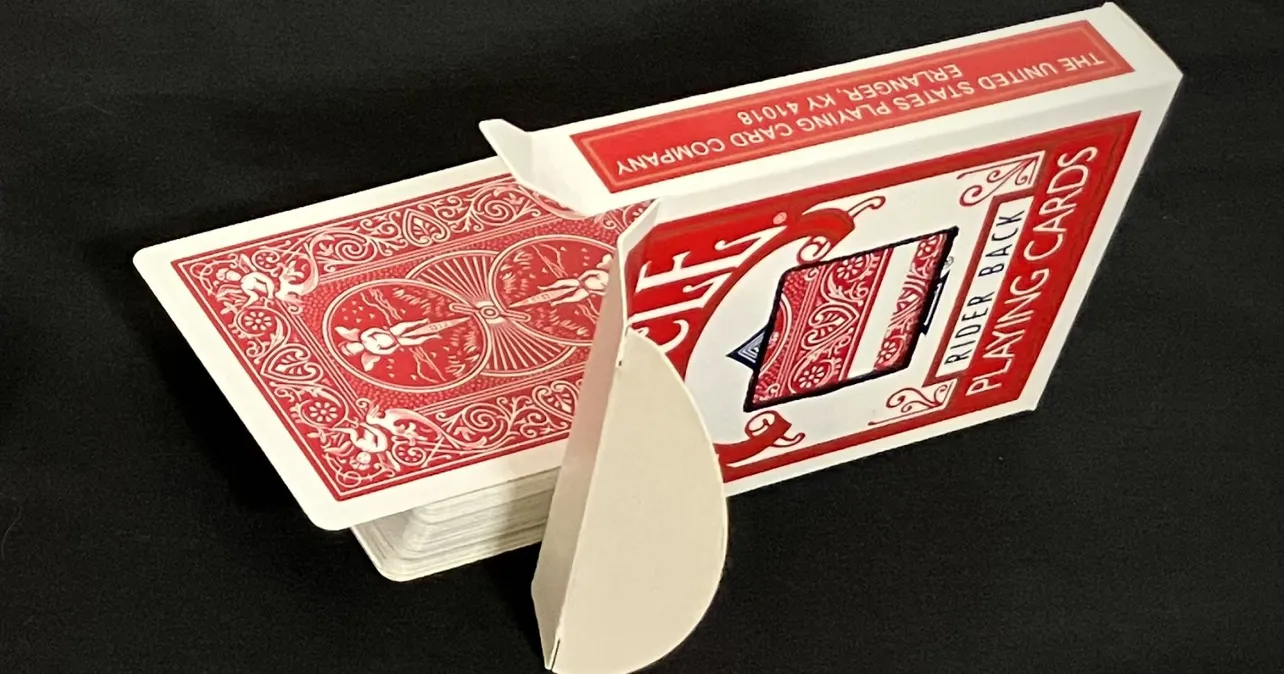The word “fake” is scattered across the comments section of the internet. It’s a reaction to a world of uncertainty, ambiguity, and agendas, where we’re beginning to doubt almost every news article or visual image that appears online. It’s also a lazy response from those not wanting to give any thought to how something unexpected, or outside our experience, could possibly be true.
An exercise I regularly find myself doing in my work goes in the opposite direction: Taking something that is fake in the digital realm and then trying to replicate that in the real world. A fake fake. It adds an additional layer of deception and, I hope, encourages further thought from the viewer.
Recently I saw a wonderful photo of a warped playing card box that magician Richard Pinner had posted online. With his blessing, I undertook the challenge of recreating the image using physical objects. Fig. 1 shows a card box balanced on its side, a cut-out window reveals a vertical card inside. However, horizontal cards are emerging from the open case. Somehow within the case, the cards have been warped by 90 degrees. A video I’ve made shows this with movement, where I slowly extract one card. This sliding combined with the window view enhances the illusion.

